The world of “22 AI Landscape Design Ideas” invites you to re-imagine outdoor spaces by seamlessly merging technology with nature. Cutting-edge AI tools are transforming how we design, nurture, and experience gardens and landscapes. With intelligent systems that monitor and adapt in real time, these ideas empower both professionals and homeowners to achieve outstanding design outcomes effortlessly. From smart irrigation to immersive sensory experiences, each concept offers practical benefits that enhance sustainability, efficiency, and beauty. Dive in and explore each idea to unlock innovative ways to create vibrant, futuristic landscapes with AI Landscape Design Ideas.
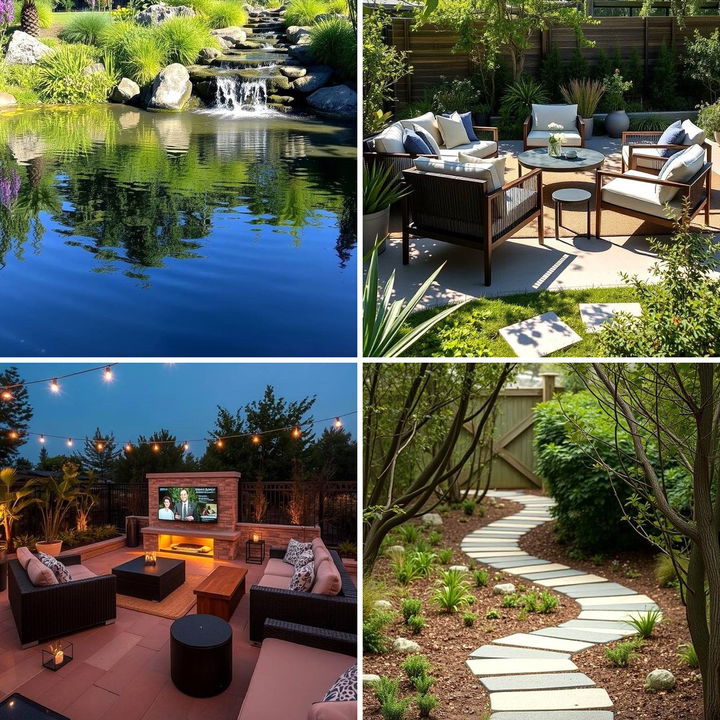
1. Smart Irrigation Systems Integration

Embracing smart irrigation transforms garden care with AI algorithms that optimize water usage for thriving landscapes. Intelligent sensors monitor soil moisture and weather conditions, adjusting water flow seamlessly. This approach conserves resources while ensuring plants receive the precise hydration they need, reducing manual oversight. The system’s precision not only boosts plant health but also minimizes water waste, contributing to sustainability. Garden owners enjoy reduced effort in managing their green spaces, and landscape designers can integrate technology effortlessly into their projects. This method is a forward-thinking solution that aligns nature with innovation for efficient outdoor design.
2. Virtual Garden Visualization

Imagine stepping into a digital garden before breaking ground in reality. Virtual garden visualization harnesses advanced AI to create realistic, 3D renderings of potential landscapes. Users can experiment with various layouts, colors, and materials, experiencing their future garden with astonishing clarity. This immersive tool helps in making informed design decisions by presenting visual simulations that capture light, shadow, and texture details. It bridges the gap between concept and actual space, empowering designers to foresee potential challenges and optimize aesthetics. This approach sparks creativity and assures that every chosen element harmonizes perfectly in the final physical landscape.
3. Adaptive Planting Designs

Adaptive planting designs use AI to consider environmental factors such as soil type, climate, and seasonal changes. By analyzing these dynamic conditions, intelligent platforms generate planting schemes that maximize growth and sustainability. This method tailors plant selection and positioning to suit local ecosystems, ensuring that every species thrives in its ideal spot. Gardeners benefit from reduced maintenance needs and better long-term viability of plant life. Adaptive methods also support biodiversity and create more resilient landscapes that can adjust to unpredictable weather patterns. This personalized approach makes outdoor spaces more enchanting, robust, and environmentally friendly.
4. AI-Powered Soil Analysis

AI-powered soil analysis offers an in-depth understanding of soil structure, nutrient levels, and moisture content in your landscape. This technology swiftly interprets complex data, providing tailored recommendations for fertilizer use and plant selection. Gardeners and designers gain actionable insights that enhance soil health, leading to better plant vitality and reduced resource wastage. With predictive analytics, potential issues can be addressed before they affect the landscape. This precision-driven approach ensures that every patch of soil is optimized for growth, resulting in vibrant, long-lasting greenery. Such advancements empower users to cultivate sustainable and flourishing outdoor environments effortlessly.
5. Automated Mulching with AI

Automated mulching systems use AI to determine the best mulching strategies for varied garden zones. By analyzing plant types and soil conditions, these systems decide the ideal mulch depth and distribution, enhancing soil moisture retention and weed suppression. This efficient process saves time while promoting soil health and optimizing plant growth. The integration of AI reduces guesswork, ensuring consistency across the landscape. Designed for both small and extensive gardens, automated mulching offers sustainability and convenience. Garden enthusiasts can enjoy lower maintenance demands and a naturally nourished garden environment that reflects modern, smart landscaping practices.
6. Intelligent Lighting Configurations
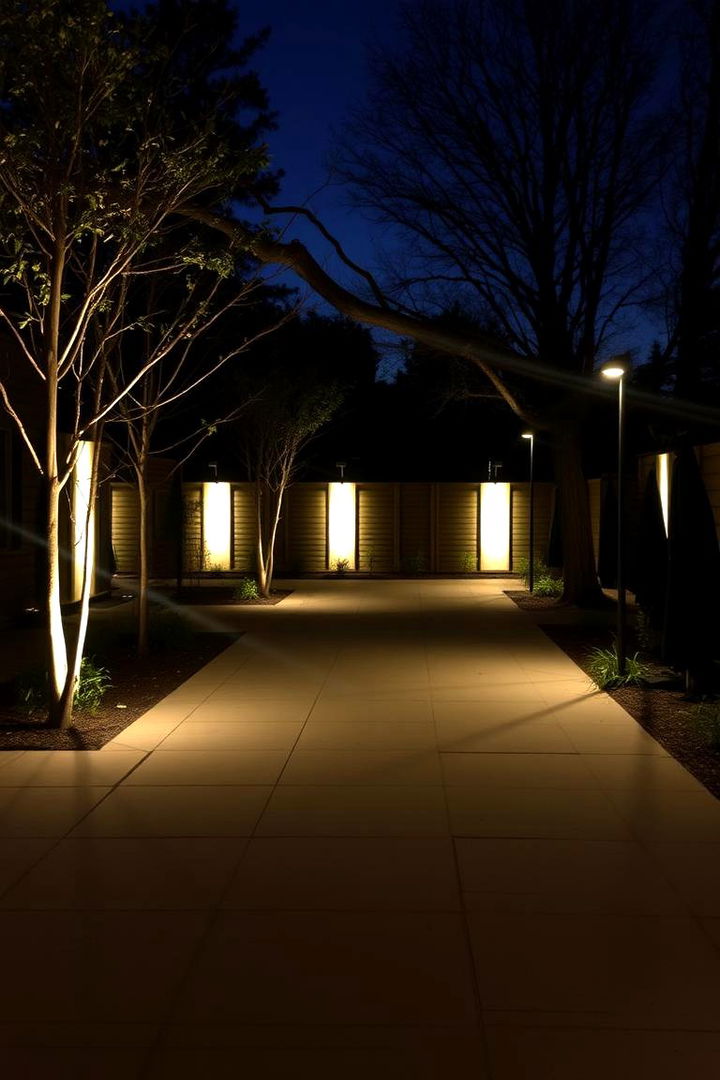
Intelligent lighting configurations elevate outdoor ambiance using AI to synchronize lighting intensity, color, and timing with the landscape’s natural features. These systems help create dynamic moods for different times of day and special occasions. By analyzing environmental cues, the AI adjusts light placements to illuminate pathways, water features, and vegetation artfully. This approach not only enhances safety and aesthetics but also conserves energy through adaptive brightness. Homeowners can explore new ways to highlight garden focal points and celebrate the beauty of nature after dark. The result is a mesmerizing, finely tuned outdoor environment that encourages both relaxation and creativity.
7. Personalized Climate Adaptations

Personalized climate adaptations utilize AI to tailor landscape designs to microclimatic conditions, ensuring optimal plant survival and comfort. This approach leverages data on temperature fluctuations, humidity, and sunlight exposure to recommend specific plant varieties and protective measures. Homeowners and designers receive customized strategies that boost energy efficiency and environmental resilience. The system intelligently adjusts design elements to counteract heat, frost, or excessive moisture, making landscapes more sustainable and livable. With real-time updates, this method offers ongoing support, ensuring that every outdoor space remains vibrant and comfortable regardless of changing weather conditions.
8. Water Feature Optimization
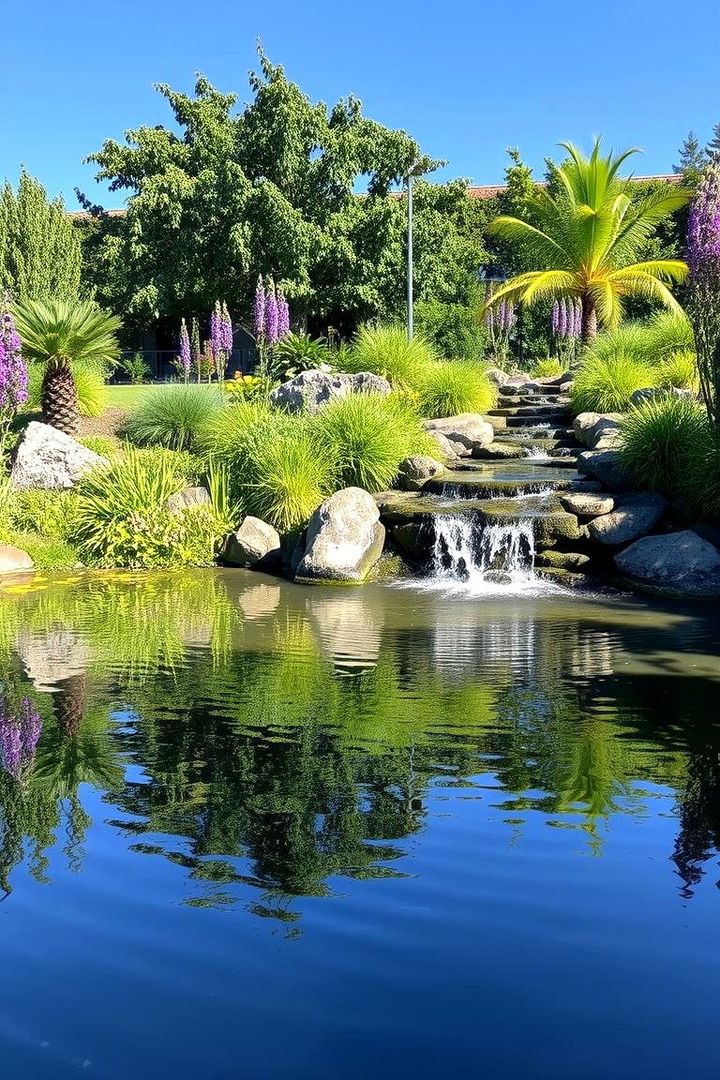
Water feature optimization employs AI to design and manage features such as ponds, waterfalls, and fountains for maximum aesthetic and ecological benefits. Algorithms calculate ideal water flow rates, filtration needs, and placement to enhance natural beauty while maintaining water quality. The system efficiently balances energy consumption with stunning visual effects, providing a serene oasis that complements the landscape. Garden designers can expect fewer maintenance hassles and a harmonious integration of water elements. The result is a dynamic water environment that refreshes the senses and adds a soothing auditory backdrop, enriching the overall outdoor experience.
9. Sustainable Material Recommendations

Sustainable material recommendations come from AI analyses that study durability, eco-impact, and cost-efficiency of various outdoor construction materials. This innovative tool offers insights into stone, recycled plastics, bamboo, and other environmentally friendly options. Garden designers benefit from clear guidelines that help reduce their carbon footprint while ensuring longevity and aesthetic appeal. By considering local availability and climate resilience, the technology assists in creating landscapes that are both beautiful and sustainable. Such informed decision-making fosters responsible design practices, balancing elegance with environmental stewardship and optimizing resource allocation for modern outdoor projects.
10. Integrated Pest Management Solutions

Integrated pest management solutions powered by AI can predict pest outbreaks and suggest eco-friendly control methods. By analyzing environmental data and historical infestation patterns, these systems recommend targeted approaches that minimize chemical usage. This proactive method protects plant health and maintains natural ecological balance. Gardeners appreciate the reduced reliance on pesticides and the promotion of beneficial insects that contribute to a thriving ecosystem. The technology not only saves time and resources but also fosters a healthier garden environment. With smart monitoring, potential issues are detected early, ensuring that landscapes remain vibrant and pest-free through environmentally conscious interventions.
11. AR-Based Landscape Previews
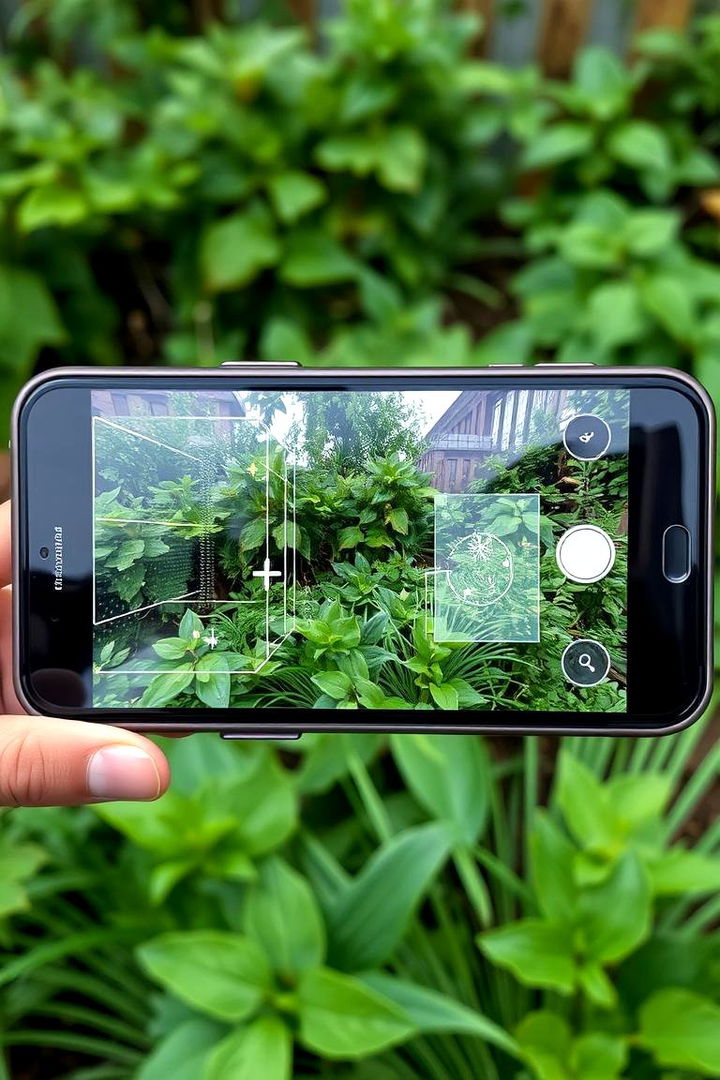
AR-based landscape previews merge augmented reality with AI to let you virtually step into your designed outdoor space before implementation. This interactive experience allows homeowners to experiment with design elements and material choices in real time. By overlaying digital models onto the actual environment, it becomes easier to visualize plant arrangements, pathways, and structures. This technology refines decisions and minimizes costly revisions. It provides a clear view of how different components interact in the living space, offering a confident preview for both designers and clients. AR interactivity transforms planning into an immersive exploration of endless creative possibilities.
12. Dynamic Seasonal Color Palettes

Dynamic seasonal color palettes powered by AI adjust landscape designs to reflect the changing colors of each season. This smart system analyzes regional climate data and plant life cycles to recommend complementary hues for spring blooms, summer vibrancy, autumn warmth, and winter serenity. By continuously updating color schemes, the approach ensures that gardens remain visually captivating year-round. Designers and homeowners can more easily plan maintenance and replacement schedules, leading to enduring charm and cohesiveness. The adaptability of dynamic palettes invites a renewed appreciation for nature’s rhythm and diversity, merging art with science in outdoor aesthetics.
13. Eco-Friendly Energy Solutions

Eco-friendly energy solutions integrate solar panels, wind turbines, and energy-efficient lighting into landscape design using AI for optimal placement and performance. By considering environmental factors and energy demands, the system suggests renewable energy installations that blend seamlessly with outdoor aesthetics. This strategy reduces energy costs and environmental impact while enhancing the functionality of the space. Homeowners gain the benefit of sustainable power generation without sacrificing design elegance. The result is an innovative, eco-conscious garden that combines modern technology with nature’s splendor, offering efficient energy solutions that stand as a testament to forward-thinking, sustainable landscaping.
14. Predictive Maintenance Scheduling

Predictive maintenance scheduling relies on AI to forecast repairs and upkeep needs across outdoor spaces. Using data from sensors and historical trends, this method identifies when irrigation systems, lighting, or garden structures might require attention. The proactive approach minimizes unexpected downtime and prevents minor issues from escalating into major problems. Homeowners benefit from reduced maintenance costs and enhanced longevity of their landscapes. The system’s intuitive alerts ensure that every component of the garden remains in prime condition, allowing designers to focus on creative aspects while technology handles routine upkeep. This reliability elevates the smart landscape management experience.
15. Smart Outdoor Furniture Placement

Smart outdoor furniture placement uses AI analysis to optimize the layout of seating, tables, and decor in your garden. The system considers spatial dimensions, sun exposure, and traffic flow to recommend arrangements that maximize comfort and functionality. This systematic approach ensures that every piece complements the overall design while promoting better social and relaxation areas. Homeowners find it easier to create inviting seating areas that enhance outdoor living experiences. The process adds a layer of precision to landscape design that balances aesthetics with practicality, making every outdoor gathering an opportunity to enjoy naturally optimized comfort and style.
16. Customizable Outdoor Entertainment Zones

Customizable outdoor entertainment zones leverage AI to design flexible spaces suited for social gatherings, dining, or relaxation. By analyzing available space, audience needs, and environmental factors, the technology offers layout suggestions that seamlessly integrate seating, lighting, and multimedia elements. This innovative approach ensures that every entertainment zone is both stylish and highly functional. Homeowners and event planners can experiment with different configurations to suit varying occasions, from intimate dinners to lively parties. The customizable aspect provides a dynamic, inviting atmosphere, transforming outdoor spaces into vibrant hubs where creativity and technology converge to enhance social experiences.
17. Noise Reduction and Privacy Solutions
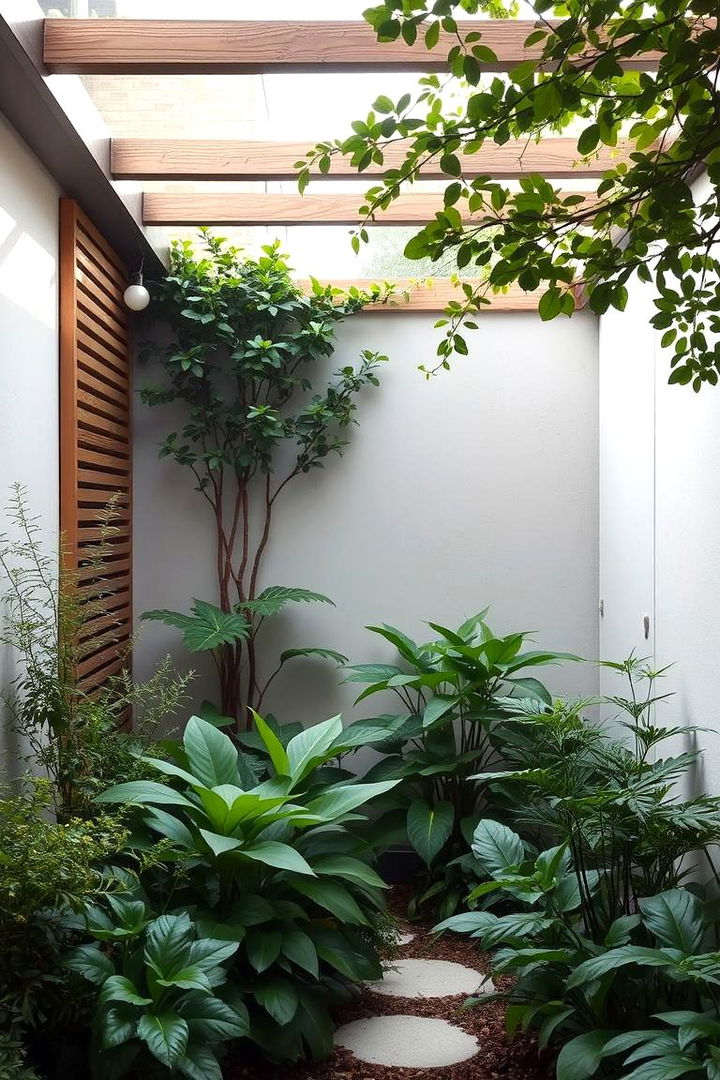
Noise reduction and privacy solutions make use of AI to strategically position natural and artificial elements that buffer unwanted sounds while ensuring privacy. By analyzing sound propagation and environmental features, the system recommends plantings, water features, or barriers that absorb noise and block intrusive views. This method creates serene, isolated outdoor spaces ideal for relaxation and focused work. Homeowners benefit from enhanced comfort, as the landscape transforms into a tranquil retreat free from urban clamor. With intelligent design tips that harmonize nature and structure, users can achieve an oasis of calm and seclusion in even the busiest neighborhoods.
18. Eco-Smart Pathway Designs
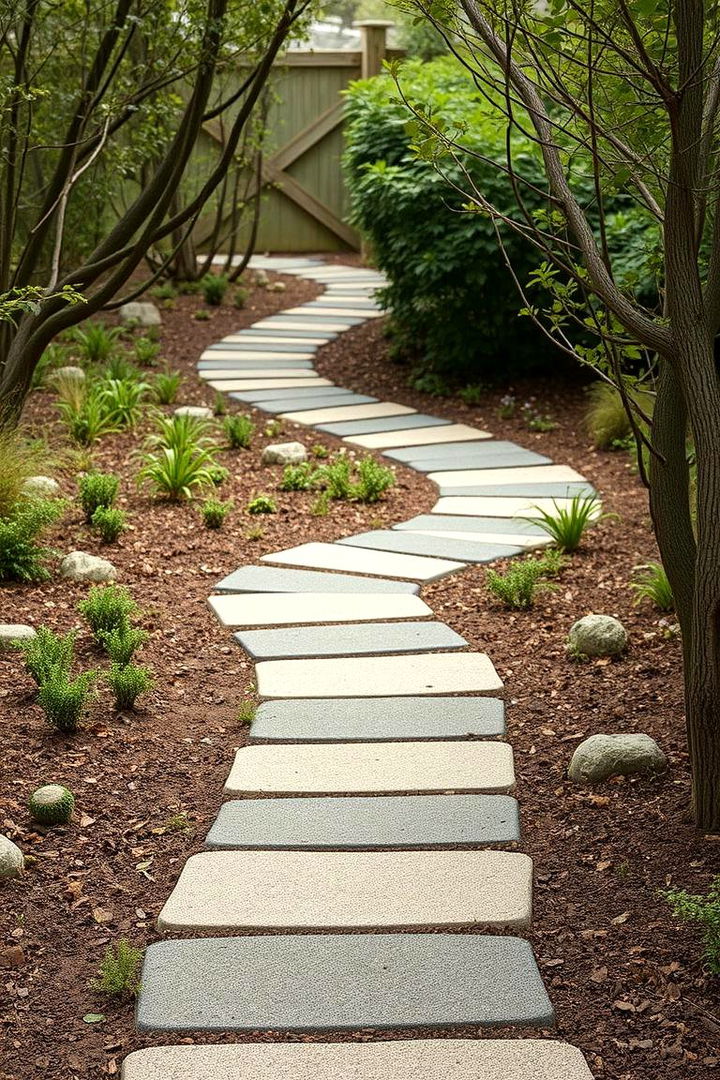
Eco-smart pathway designs employ AI to plan walkways that complement the natural terrain while promoting sustainability. By analyzing soil stability, topography, and material properties, the system suggests eco-friendly pathways that guide foot traffic without disrupting nature. The recommended designs blend durability with aesthetic appeal, using natural stone, recycled materials, or permeable surfaces. Garden designers and homeowners enjoy reduced environmental impacts and improved safety features. The strategic layout of pathways not only embellishes outdoor areas but also connects different landscape zones harmoniously, creating accessible, beautiful routes that invite exploration and daily enjoyment.
19. Data-Driven Ecological Balance
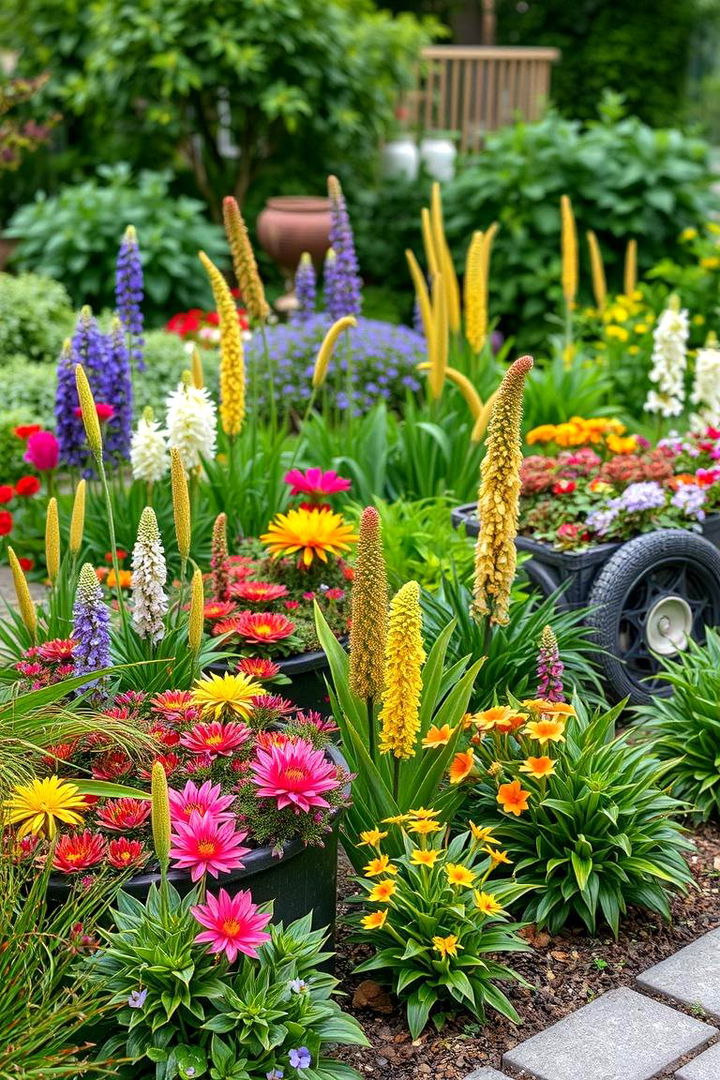
Data-driven ecological balance integrates AI to maintain a harmonious interplay between human design and nature’s rhythms. This approach collects data on biodiversity, resource availability, and environmental changes to inform planting strategies and design adjustments. The technology ensures that each element of the landscape contributes positively to the ecosystem, supporting diverse plant and animal life. By balancing engineering with natural processes, designers can create outdoor spaces that are both functional and ecologically sound. Homeowners appreciate the sustainable framework that minimizes chemical use and reduces environmental strain while encouraging organic growth and vibrant, balanced ecosystems in every garden corner.
20. Immersive Sensory Garden Experiences
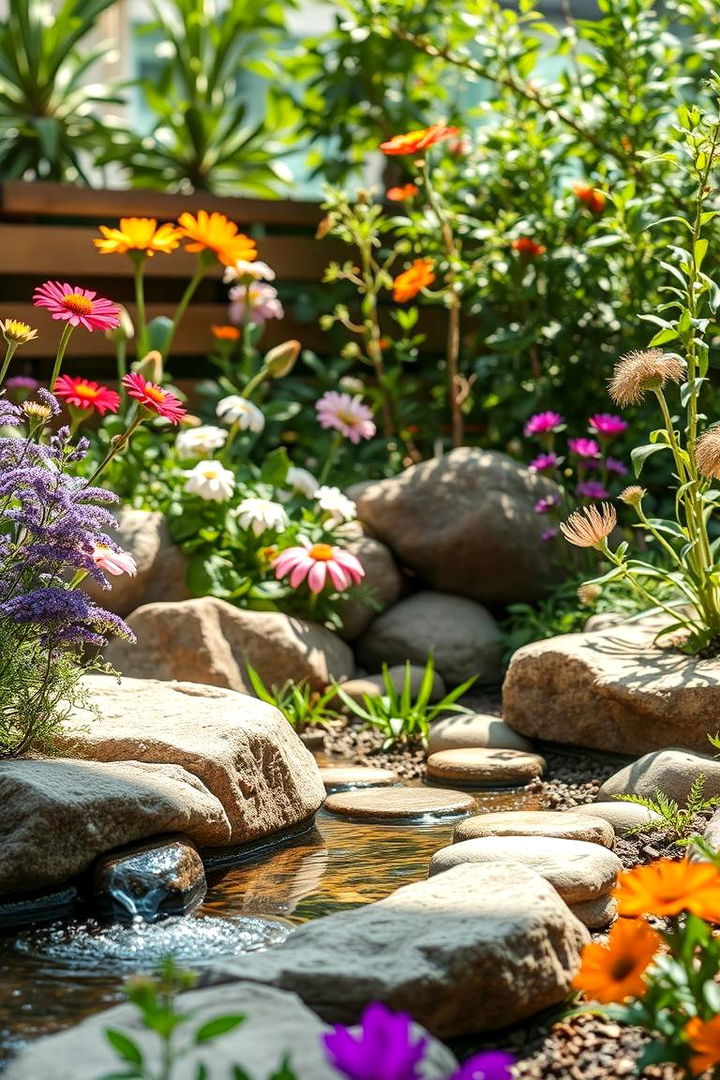
Immersive sensory garden experiences utilize AI to orchestrate multi-sensory elements including aroma, sound, and tactile textures into a cohesive outdoor design. By analyzing user preferences and environmental data, the system curates experiences that stimulate sight, hearing, and smell. This innovative approach transforms ordinary gardens into dynamic spaces that uplift the mood and evoke deep emotional responses. Homeowners can enjoy personalized sensory journeys that engage every sense, deepening their connection with nature. The resulting spaces become havens of relaxation, creativity, and rejuvenation, where each element is thoughtfully arranged to awaken and inspire the spirit.
21. Real-Time Landscape Performance Monitoring

Real-time landscape performance monitoring uses AI-driven sensors to track the health and activity of garden components continuously. By gathering data on plant vitality, energy usage, and environmental conditions, the technology provides instant feedback for immediate improvements. This constant monitoring detects issues early, allowing for swift maintenance and adjustments that enhance overall landscape performance. Designers benefit from detailed insights that lead to sustained beauty and efficiency. The system empowers users with a proactive, data-driven approach to outdoor management, ensuring that every element remains optimal and inviting. It’s a modern tool that revolutionizes how gardens are maintained and enjoyed.
22. Holistic AI-Driven Landscape Refinement
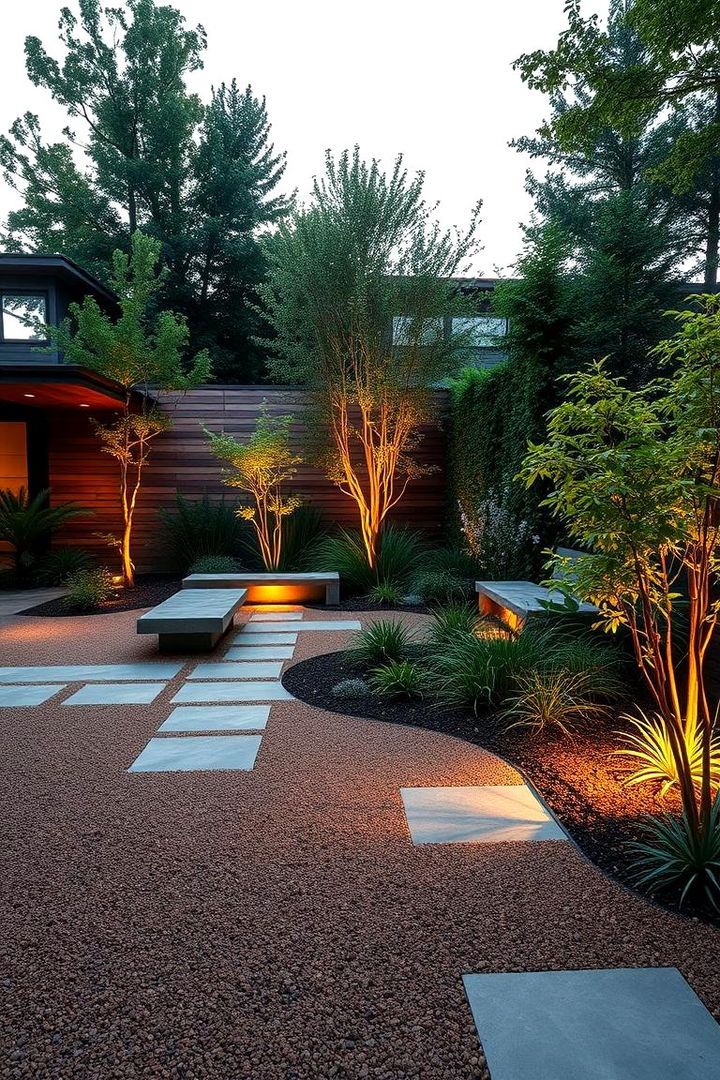
Holistic AI-driven landscape refinement combines multiple AI strategies to perfect every aspect of outdoor design. The system integrates soil analysis, climate adaptation, lighting control, and more to offer comprehensive design recommendations that foster harmonious, thriving landscapes. By unifying data-driven insights from various sources, it ensures every design element works in unison for maximum aesthetic and ecological benefit. Homeowners and designers are empowered to create refined, sustainable spaces that evolve with nature. This approach not only enhances visual appeal but also supports long-term landscape health, making it an essential tool for future-forward gardening and sophisticated outdoor living.
Conclusion:
The journey through these 22 AI Landscape Design Ideas has unveiled a spectrum of smart solutions that marry technology with nature. Each concept, from advanced soil analysis to immersive sensory experiences, demonstrates how AI can optimize efficiency, sustainability, and aesthetic appeal. By embracing these innovations, designers and homeowners alike can create outdoor spaces that are not only beautiful but also responsive to environmental dynamics. The fusion of creative technology with traditional landscaping practices sets the stage for future trends that inspire and nurture the natural world. Let these ideas spark creativity and guide you in transforming your outdoor space into a dynamic, living masterpiece.














